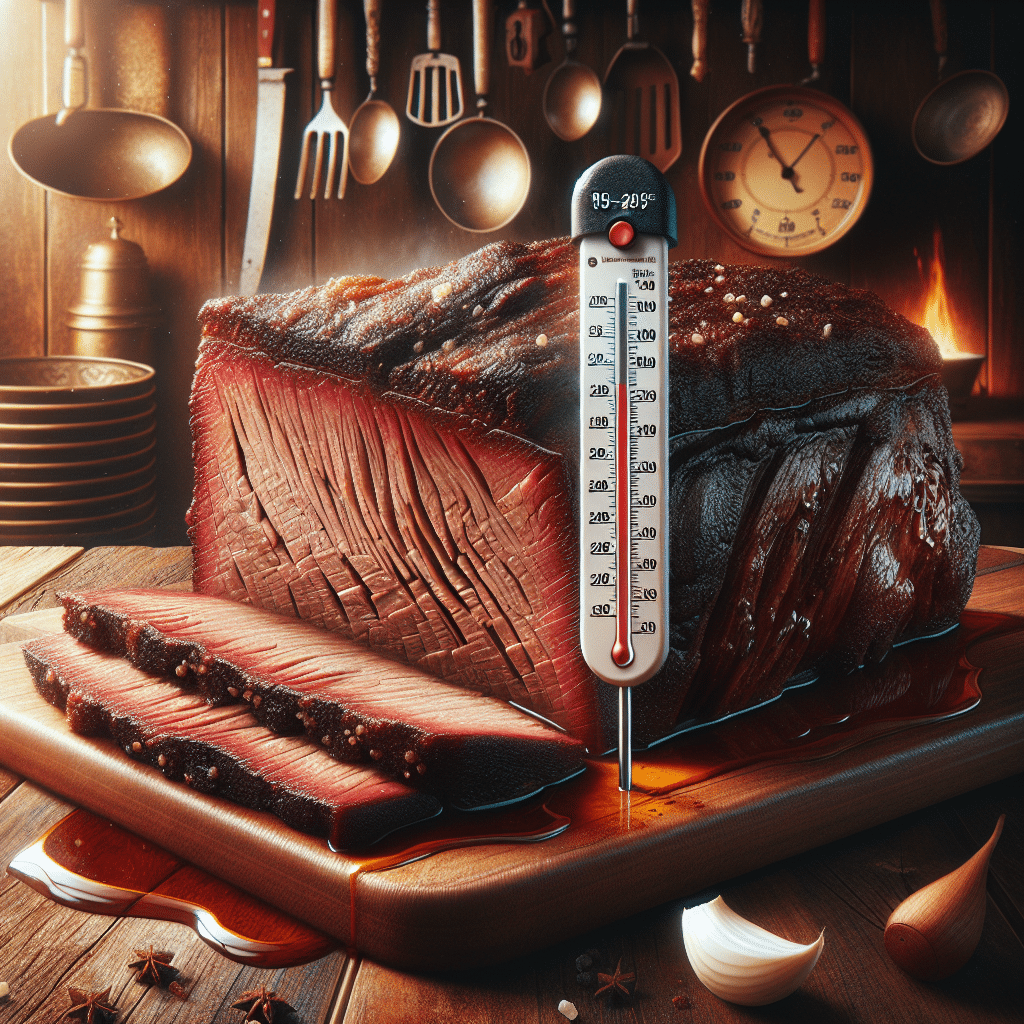What Temperature is Brisket Done?
The ideal internal temperature for brisket is typically between 195°F to 205°F (90°C to 96°C). This range typically allows the connective tissues and collagen within the brisket to break down properly, resulting in a tender and flavorful dish. When reaching about 203°F (95°C), brisket often hits the “pull” point, where it retains moisture and becomes easy to slice or shred. Always use a reliable meat thermometer to monitor this temperature accurately, as cooking times can vary based on factors like the size of the brisket and cooking method. Remember, patience is key; resting the brisket for about an hour post-cooking enhances its flavor and juiciness.
Understanding Brisket and Its Cuts
Brisket, a beloved cut often associated with barbecuing and slow cooking, comes from the breast section of the cow. This cut is rich in connective tissues, making it tougher than other types of meat. However, with the right cooking techniques, brisket can transform into a mouth-watering delicacy. There are primarily two cuts of brisket: the flat cut and the point cut.
- Flat cut: Leaner and more uniform in shape, making it easier to slice.
- Point cut: More marbled with fat, giving it richer flavor and tenderness when cooked properly.
The key to preparing a perfect brisket lies in understanding these cuts and adjusting cooking methods accordingly.
Importance of Cooking Temperature
Temperature is paramount when it comes to cooking brisket. Cooking at too low a temperature can lead to undercooked brisket filled with tough connective tissues. On the other hand, cooking it too high can dry it out. Ideally, brisket should be smoked or slow-cooked at temperatures ranging from 225°F to 275°F (107°C to 135°C) until it reaches that magic internal temperature of 195°F to 205°F (90°C to 96°C).
Factors Influencing Cooking Time
Several factors can influence the cooking time and overall outcome of your brisket:
- Size and Thickness: Larger cuts typically take longer to reach the desired temperature.
- Cooking Method: Smoking takes longer than braising, but each method has its unique benefits.
- Humidity: Cooking in a humid environment can help maintain moisture, leading to a juicier brisket.
- Resting Time: Allowing the brisket to rest after cooking contributes significantly to its juiciness by allowing the juices to redistribute.
Cooking Techniques for Brisket
There are various techniques for cooking brisket, each providing a unique flavor profile and texture:
1. Smoking
Smoking brisket is a popular method that infuses a smoky flavor and tenderness. Using wood chips like hickory or mesquite enhances its taste. Recommended cooking temperatures vary from 225°F to 250°F (107°C to 121°C).
2. Braising
Braising involves cooking brisket slowly in liquid. Ideal for tougher cuts, this method not only tenderizes the meat but also keeps it moist. Temperatures typically range from 300°F to 325°F (149°C to 163°C).
3. Grilling
While not as common, brisket can be grilled. This method requires close monitoring of the internal temperature to prevent drying out the meat.
Checking Doneness
To accurately determine the readiness of your brisket, the most effective and reliable tool is a digital meat thermometer. Insert the thermometer into the thickest part, avoiding bone or fat, to get an accurate reading.
Resting the Brisket
After reaching the ideal cooking temperature, it’s essential to let the brisket rest for approximately one hour. This step is crucial as it allows the juices to redistribute within the meat, ensuring a flavorful and juicy finished product.
FAQs About Brisket Cooking Temperatures
What is the minimum temperature for cooking brisket?
The USDA recommends a minimum internal temperature of 145°F (63°C) for safety, but for barbecue-style brisket, cooking to 195°F to 205°F (90°C to 96°C) is best for tenderness.
Can I cook brisket at a higher temperature?
Yes, brisket can be cooked at higher temperatures, especially during the stay-at-home quicker cook methods, but it risks being less tender and more dry. Aim for the 195°F to 205°F (90°C to 96°C) range for optimal results.
How do I know when my brisket is done?
Use a meat thermometer to measure the internal temperature. Look for temperatures between 195°F and 205°F (90°C to 96°C) to ensure the meat is tender and juicy.
What if my brisket is tough after cooking?
If your brisket is tough, it may have been cooked at a too low temperature or not rested appropriately. Similarly, insufficient cooking time can lead to unbreakable collagen in the meat. Returning brisket to low heat for additional cooking can help remediate this issue.
Conclusion
Understanding the right temperature for cooking brisket and the factors influencing doneness can significantly elevate your barbecue game. By following these guidelines and ensuring a well-monitored cook, your brisket can turn out to be a flavorful centerpiece for any gathering. Whether you opt for smoking, braising, or grilling, mastering the temperature will ensure a tender and delicious meal that you can be proud to serve.
